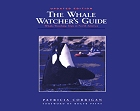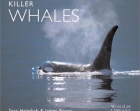 |
|
Orca info
Info you should know before you goLook for postings at launch facilities regarding current conditions, including restrictions to orca access and approach guidelines. Special attention to keep clear of A73 as she reacquaints herself to her home waters, family pod and way of life - including ignoring boats!
General orca viewing mandates include keeping 100 meters off to the side preferably parallel to them as opposed to in front of or behind. They're likely to go about about their business and ignore you but they can be curious at times, so don't assume they won't come over to you - just stay calm and enjoy the view without making any sudden movements or changes of direction.
I was lucky enough to see A73 (aka Springer) a couple weeks after her triumphant return to Johnstone Strait. But I did not pursue her and she was not pursuing the boat I was in either. The boat was floating at a standstill, engines and electrical off for a good 20 minutes at least when A73, A61 and A51 showed up and swam right by the boat. It was pure luck, so don't be tempted to make it happen. A73 behaved perfectly (ignored the boat) which is what everyone hopes for as her history was not too hot in this regard. But she is acclimating well to her home water and natural behaviors.
|
|
Learn more about Springer's rescue and life story. |
|
|
To help support research efforts, please donate here. |
|
|
Help support rescue efforts by making a donation. |
|
|
Have a whale of a good time - for kids of all ages. |
- A Community shares a common range and often associate with one another
- A Clan is made up of pods of similar dialect, likely ancestrally related
- A Matriline relates to a maternal family group who travel together for life
- A Pod is a group of related matrilines or any oracs that usually travel together
- A Subpod is a group within a pod that travel together, sometimes separate from the pod
When resting, orcas may engage in a rest and sleep pattern which lasts for several hours. They swim slowly with physical and vocal activity at a minimum. Respirations of the whole pod are coordinated and the animals stay close together in a line, generally with an adult male at each end. When whales are hardly moving at all, it is called logging. The whole pod faces in the same direction. So when you see that or a picture of that, now you know what is going on.
So many of these magnificent creatures have been captured in the last 40 years or so. Their striking good looks, impressive size and the fact that these intelligent animals can be so easily trained to perform tricks have made them popular choices for oceanariums in North America, Europe and Asia. However, these animals suffer greatly in captivity and the history of orca captivity is one of frustration, aggression, illness, failed pregnancies and premature death. Most of the whales ever captured and forced into slave labor are now dead. The average survival time in captivity is dismal, maybe a 10th of what wild orcas can expect. How telling.
Captive breeding has increased the numbers held in marine parks around the world but a low percentage of captive-born orcas survive. All this fuss because five countries want to use the display industry to get rich on, while saying it's all for the love of the animal and to finance further research. The proof is in the pudding I suppose. Enjoying shows by captive whales is fast becoming a lot of people's all-time worst guilty pleasure - including mine, that's for sure.
Eagles
Info you'll enjoy knowing before you goYou'll see LOTS of Bald Eagles. They live 25 to 35 years. A pair flew not more than 10 feet right over my head and the sound of their wings was quite amazing. They are so big and powerful and up close those wings are pretty noisy! What a great experience to see them in the wild so up close! Later on the same day I had a good time watching a bald eagle "walking" sideways down a log breakwater, fishing. Pretty funny... see pics below.
Bald Eagles feed primarily on fish, but also eat small animals (like ducks and rabbits, etc.) and occasional carrion. They swoop down to seize fish in their powerful, long and sharp talons. They can carry their food off in flight, but can only lift about half their weight. Bald Eagles can fly at speeds of about 65 miles per hour in level flight, and up to 150 or 200 miles per hour in a dive. They can fly to altitudes of 10,000 feet or more, and can soar aloft for hours using natural wind currents and thermal updrafts. They can swim to shore with a heavy fish using their strong wings as paddles, but it's also possible for them to drown if the fish weighs too much!
Bald Eagles are generally monogamous and mate for life. A Bald Eagle will usually only select another mate if its faithful companion should die. They build large nests, called aeries (pronounced air-ees) near the top of tall trees and seem to prefer sturdy pine trees. The nests become larger as the eagles return to breed and add new nesting materials year after year. Bald Eagles make their new nests an average of 2 feet deep and 5 feet across. Eventually, some nests reach sizes of more than 10 feet wide and can weigh several tons. When a nest is destroyed by natural causes it is often rebuilt nearby. The female lays 1 to 3 eggs annually in the springtime, which hatch after about 35 days of incubation. Hunting, egg incubation, nest watch, eaglet feeding and eaglet brooding duties are shared by both parents until the young are strong enough to fly at about 12 weeks of age. Eaglets are full size at 12 weeks of age. Only about 50% of eaglets hatched survive the first year.click to enlarge
|
|
|
|
|
|
.
Bear Info
Info you need to know before you go
Vancouver Island, BC has lots of bears. Black bears. Read some about them. Do more research after you read this if you plan on camping or hiking here any time soon.
Watch for signs of bears, such as droppings, fresh tracks, or their strong scent. Be careful near berry patches or the banks of streams where salmon are spawning. Never approach a fresh kill as the bear considers this his property and his food - not yours.
Make noise. Carry a noisemaker, such as a bell, or a tin can filled with a few pebbles. Attach it to your walking stick or pack. The human voice is one of the most unfamiliar sounds in the wilderness, so talking or singing can be effective. Be extra careful in thick bush.
Store food in the trunk of your vehicle, or make a bear-proof cache by suspending the food in a plastic bag at least 10 feet off the ground between two trees. Realize that bears are strong enough to tear a car apart to get to food if they want to.
Avoid cooking foods that give off a strong odor, such as canned fish. Burn out tin cans and scraps after a meal, or use dried foods. It is best not to wipe your hands on clothes while cooking, and to avoid cooking near your tent. Don't sleep in the same clothes you cook in either.
Be particularly careful in high winds, when an animal may not be able to pick up your scent soon enough to avoid you.
Female bears with cubs are especially dangerous. Never approach a cub, even if it seems to be alone, and never get between a cub and its mother.
Evidence indicates that bears are likely to be more aggressive toward those wearing scented cosmetics, hair spray, or deodorant, and women in menstruation.IF ALL PRECAUTIONS FAIL...
If you meet a bear, it will most likely run away. But bears can be unpredictable. Learn to recognize the signs of a bear attack and above all don't panic and don't look into the bear's eyes.
A bear rearing up on its hind legs is probably taking a more careful sniff to make certain of who you are. The signs of attack are growling, with ears laid back.
Running or waving of the arms will only provoke a bear.
If the bear is close, back away slowly, talking as calmly as possible in a low voice if possible. Back towards a tree or behind rocks or into a gully. Do not do anything suddenly and do not make eye contact with the bear.
Should a charge be unavoidable, protect your stomach, thighs and neck by lying down on the ground in a hunched position with knees drawn up to the chest and hands clasped over your neck. The bear may try to maul you but it will do less damage if you can manage to lie still. Usually the bear will retreat immediately after the attack and often will stop short of attacking you at the last second and retreat, so don't give up hope.
Black bears vary in weight up to 600 pounds are up to nearly five feet long. Fur color varies from black to brown to cinnamon or blond. There is often a white patch at the throat. Claws are short and well-adapted for climbing. Black bears eat berries, grass, roots, fish, carrion, and whatever mammals they can catch. They prefer bushy areas but they inhabit almost every type of terrain, from coastal beaches to forests, dry grassland and sub-alpine meadows. In the forest, they like open spaces where berries can be found and many forms of succulent plants such as clover and grasses. They love salmon, and during spawning season will congregate near fish-bearing waterways. Since grizzly bears do not inhabit Vancouver Island, you don't need to worry about them... of course bears can swim, so never say never.
British Columbia is big time into logging. Here's some pics but alas - no info... yet another highly emotional issue, specially around here.
Just a note about Cougars
Cougars are rarely seen in the wild, but encounters do happen. If you should come across a cougar, the best way to repel it is to make yourself look as big as possible by raising your arms and you can wave them around too, unlike for a bear. If possible, grab a nearby stick and wave it too. Slowly back away while making plenty of noise. And for starters, leave your pets at home and keep children close on the trail!









